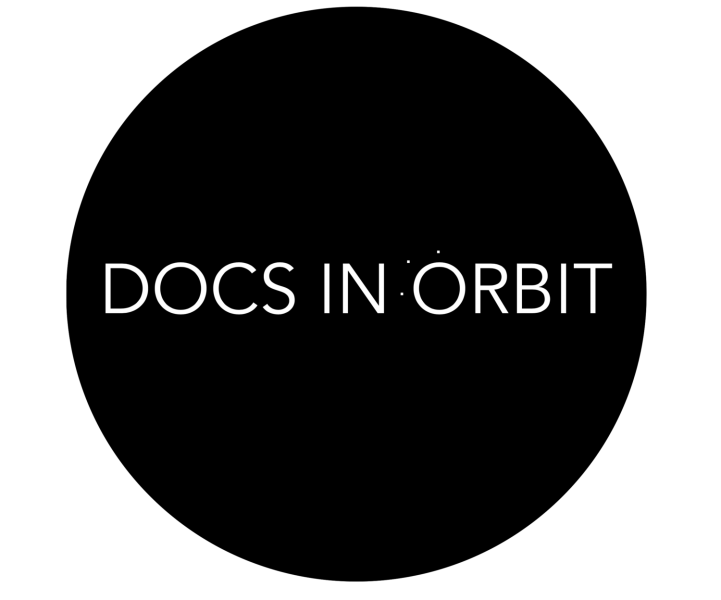NEW TO STREAMING: Promising Young Woman, MLK/FBI, News of the World, One Night in Miami & MORE

Jordan Raup
January 15, 2021
The Film Stage
https://thefilmstage.com/new-to-streaming-promising-young-woman-mlk-fbi-news-of-the-world-one-night-in-miami-more/
With a seemingly endless amount of streaming options—not only the titles at our disposal, but services themselves–each week we highlight the noteworthy titles that have recently hit platforms. Check out this week’s selections below and past round-ups here.
Film About a Father Who (Lynne Sachs)
While director Lynne Sachs admits her latest documentary Film About a Father Who could be superficially construed as a portrait (the title alludes to and the content revolves around her father Ira), she labels it a reckoning instead. With thirty-five years of footage shot across varied formats and devices to cull through and piece together, the result becomes less about providing a clear picture of who this man is and more about understanding the cost of his actions. Whether it began that way or not, however, it surely didn’t take long to realize how deep a drop the rabbit hole of his life would prove. Sachs jumped in to discover truths surrounding her childhood only to fall through numerous false bottoms that revealed truths she couldn’t even imagine. – Jared M. (full review)
Where to Stream: Virtual Cinemas
Bonus: A Lynne Sachs retrospective is underway in the Museum of the Moving Image’s Virtual Cinema.
Acasă, My Home (Radu Ciorniciuc)
When encountering the societal and economic structures of everyday life, it’s not a rare dream for many to wonder what life may look like off the grid and out of the hands of a bureaucratic entity that doesn’t have your best interests in mind. For one family living in the vast water reservoir of the Bucharest Delta, they have made this their reality for the last eighteen years. The Enache family and their nine children call this abandoned area their home, sleeping in their homemade hut, fishing for food, and taking gentle care of this slice of nature directly outside the hectic Romanian capital. As outside interest in their homeland grows, Acasă, My Home director Radu Ciorniciuc captures the forces of civilization that cause an upheaval of their lives with a well-rounded eye, painting an empathetic, complex portrait of the costs of independence. – Jordan R. (full review)
Where to Stream: Virtual Cinemas
An Elephant Sitting Still (Hu Bo)
Though in many respects unpolished, late Chinese director Hu Bo’s first–and only–feature is a cry into the void so raw and resounding it shakes you out of a stupor you never even realized. The breathlessly long set pieces build up a sense of suffocation in real time, while the subtle music and camerawork evoke the constant, unspoken despair of a billion nobodies. This is the work of a keenly observant storyteller who bared his last outrage on screen and who probably proved too perceptive for the moral bankruptcy of this world. – Zhuo-Ning Su
Where to Stream: OVID.tv
Ham on Rye (Tyler Taormina)
Tyler Taormina’s singularly woozy debut about a group of teens making their way toward some cryptic rite of passage spins the high-school genre like a top. Purposefully devoid of clarifying exposition, it builds narrative mythology out of the dual uncertainty and excitement felt by young people making their initial crossing into adulthood. The result is a mysterious mash of sinister possibilities and forlorn melancholy that lingers like the smoky air so prominent in its central celebratory sequence inside a portal-like sandwich shop. – Glenn H.
Where to Stream: MUBI (free for 30 days)
Hill of Freedom (Hong Sangsoo)
One of Hong Sangsoo’s greatest works, Hill of Freedom is a showcase par excellence in how the director adds complexity to a structure that seems simple on the surface: a woman reads a man’s letters about his adventures in Japan, only to have them fall on the ground, and thus his story is now told out of order. The playful conceit of the 67-minute film finds ample room to explore comedy, heartache, cultural identity, and more. Like most Hong films, it plays as a breath of fresh air, and even moreso during this time of immense unease. – Jordan R.
Where to Stream: MUBI (free for 30 days)
The King of Staten Island (Judd Apatow)
With his hands on the steering wheel driving down the highway, Scott (Pete Davidson) closes his eyes, ready to crash into what lies ahead and explode into flames. This is the opening of Judd Apatow’s The King of Staten Island, a quasi-comedy that is less interested in finding the funniest punchline for every situation and more curious about the search for the scattered, missing pieces of one’s soul. It’s the director’s most emotionally attuned and narrowly focused work, a film in which our attention is not pulled along by heavy dramatic shifts or distracted by a mountain of subplots, but rather how trauma can form a life of complacency and it’s only slivers of progress that hint at a more promising future. – Jordan R. (full review)
Where to Stream: HBO Max
Locked Down (Doug Liman)
From The Bourne Identity to Mr. & Mrs. Smith to Edge of Tomorrow, Doug Liman’s scale has come a long way since his smaller-scale breakouts Swingers and Go. With Locked Down, the director’s filmmaking style is pared down once again, focused on a couple quarreling during the COVID-19 lockdown in London. Reminding us he’s more than just an action or franchise director, Liman’s latest finds him going back to his roots, drawing eyeballs with a stacked cast led by Anne Hathaway and Chiwetel Ejiofor, and supported by Stephen Merchant, Mindy Kaling, Ben Stiller, Dulé Hill, and Lucy Boynton. – Michael F. (full review)
Where to Stream: HBO Max
MLK/FBI (Sam Pollard)
MLK/FBI shows the lengths J. Edgar Hoover’s FBI went to “neutralizing King as an effective Negro leader,” according to a bureau memo from 1963. Sam Pollard’s concise new documentary wrestles with King’s legacy as a Black Christian-pacifict freedom fighter and philanderer. If the last noun makes you tense up, the documentary is doing its job. The FBI’s ruthless campaign to discredit MLK Jr. with dirt on his affairs is at the center of Pollard’s story. It poses two questions: do King’s affairs discredit his legacy? And was J. Edgar Hoover’s FBI acting outside the bounds of the law, or as an apparatus of the political order? Using research from David J. Garrow, a Pulitzer Prize-winning biographer of Dr. King, testimonials from King’s inner circle, and recently declassified FBI documents, MLK/FBI shows––despite the FBI’s best efforts––the substance of King’s legacy is not his affairs, but his righteous cause for equality. – Josh E. (full review)
Where to Stream: VOD
Bonus: A Sam Pollard retrospective is underway in Film at Lincoln Center’s Virtual Cinema.
My Little Sister (Stéphanie Chuat and Véronique Reymond)
Nina Hoss and Lars Eidinger, two of Germany’s preeminent acting talents, play twins coming to terms with a diagnosis of terminal illness in My Little Sister, the second narrative film by Stéphanie Chuat and Véronique Reymond. It’s a film that carries emotional power more in its moments of natural reflexiveness than the weepie genre’s more conventional emotional beats, anchored by two focused lead performances that thankfully don’t succumb to melodrama. – Ed F. (full review)
Where to Stream: Virtual Cinemas
News of the World (Paul Greengrass)
When things get tough, I’ve always turned to the Western for clarity and reassurance. Maybe it’s because most of these films are about finding solace during uncertain times, pursuing peace where none has existed before. Though central themes of sacrifice and redemption are certainty well-trodden in the genre, filmmakers from Budd Boetticher to Kelly Reichardt remind us why they can be infinitely tweaked and subverted to reveal something new within the familiar. Watching Paul Greengrass’ sturdy new saddle opera News of the World in the late stages of 2020 felt thoroughly cleansing in this regard. – Glenn H. (full review)
Where to Stream: VOD
One Night in Miami … (Regina King)
The power behind Regina King‘s directorial debut One Night in Miami … is epitomized by an exchange about halfway through that ultimately lands on the topic of personal duty within the civil rights movement. Malcolm X saw his friends as leaders armed with the voices and platforms to shift its tide—a fact emboldening playwright Kemp Powers to hypothesize the breadth of socially- and politically-charged conversations Malcolm and friends Jim Brown, Cassius Clay, and Sam Cooke may have shared. With four impeccable performances bringing these men to life with boldness both in their ability to impersonate physically and embody spiritually, King lets her cast carry the drama by providing them the room to scream when necessary and cry when there’s nothing left to give. – Jared M. (full review)
Where to Stream: Amazon Prime
Promising Young Woman (Emerald Fennell)
Unafraid of putting off audiences, Emerald Fennell’s feature debut is the rare movie that understands rage. It knows the feeling of welcoming scorched earth; it sees the inability of truly moving past trauma. Carey Mulligan does stellar work and the bubblegum costume design makes for an addictive viewing, but it’s so much more than that. It’s cynical and hopeless—just as it should be—and its looks at the aftershocks of rape ring cathartic and exhausting in equal measure. – Matt C.
Where to Stream: VOD
Some Kind of Heaven (Lance Oppenheim)
The draws of living inside The Villages, the largest over-55 retirement community in the country, are readily apparent. For the nearly 115,000 veterans planted within the insulated Floridian suburban sprawl, there is no reason to be bored with life. Its complex contains golf courses and pickleball courts, swimming pools and volleyball beaches, acting and dance classes and plenty of tricked out golf carts. The sherbert sunset backdrops each night suggest this place is paradise. – Jake K. (full review)
Where to Stream: VOD
Sibyl (Justine Triet)
This is the third film from director Justine Triet, whose last feature In Bed with Victoria, while markedly more comic in tone, also featured a headstrong, successful woman dealing with a complicated personal life. It’s clearly something Triet prioritizes, and she gets strong performances from her two female leads, especially Efira, whose character’s poise and confidence slowly breaks down as she loses grip of her personal and professional responsibilities. There’s also a small, funny role for Sandra Hüller as an exasperated director of the chaotic film shoot that brings together Margot and Igor. – Ed F. (full review)
Where to Stream: MUBI (free for 30 days)
Space Dogs (Elsa Kremser and Levin Peter)
Legend has it that when Laika died on November 3, 1957, following a 5-hour journey that turned the dog into the first living creature to orbit the Earth, her spirit returned to Moscow, roaming the streets where Soviet scientists had plucked her. Elsa Kremser and Levin Peter’s entrancing Space Dogs begins where the legend ends, and hangs in that same mystic region all through its hour and a half. It’s an odyssey that keeps seesawing between the terrestrial and the astral, trailing behind a couple of Muscovite mongrels to connect their earthly meanderings with a larger question about the ways in which humans have colonized space, and recruited other species as martyrs in the pursuit. – Leonardo G. (full review)
Where to Stream: OVID.tv
Synchronic (Justin Benson and Aaron Moorhead)
When two paramedic best friends in New Orleans discovered the first unexplainable injury on their route, they didn’t really think much about it. The second? Well, it was a body. They shouldn’t have even been called. What about the third, though? A snake bite in a hotel room without a snake alongside a disappeared boyfriend? That’s when you start looking for the connective tissue holding everything together besides Steve (Anthony Mackie) and Dennis (Jamie Dornan) having the bad luck to catch them all. That’s when the label of a designer drug comes into focus. The name? Synchronic. Rather than a reference to “meaningful coincidences” (since coincidence was ruled out), directors Justin Benson and Aaron Moorhead lean towards Carl Jung’s “togetherness” definition. They’ve simply defined the cause along with the meaning. – Jared M. (full review)
Jordan Raup is the founder and editor-in-chief of The Film Stage and a Rotten Tomatoes-approved critic. Track his obsessive film-watching on Letterboxd.







